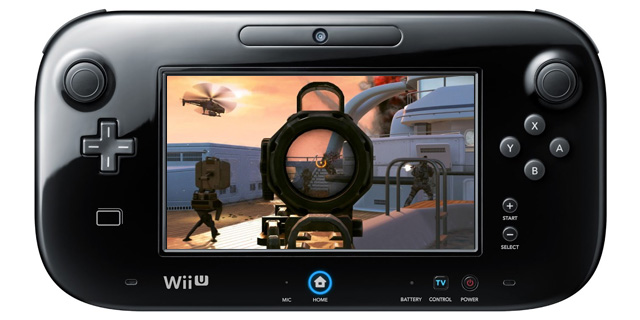
The Wii U version of Call of Duty: Black Ops II had a very simple goal: replicate the true Call of Duty experience on a Nintendo system. For the first time, it’s succeeded, delivering a game that’s incredibly similar to its 360/PS3 counterpart and featuring just enough new functionality to forgive some shaky moments and occasional feature pruning elsewhere.
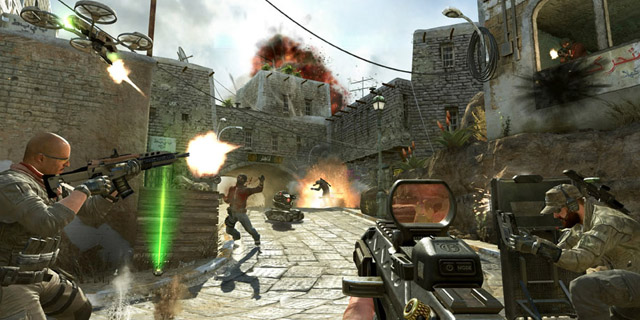
A story with meaning
The story itself is deeply personal, focusing on David Mason, son of Alex Mason, the main protagonist from the original game, and the central villain, Raul Menendez. The story jumps from past missions with Alex and his friend Frank Woods to 2025, where David Mason is attempting to uncover the history between his father and Menendez as well as put a stop to his plans. There is an ongoing conflict throughout the narrative, but it is far from the focus. This is a deeply personal story about Menendez, the Masons and Frank Woods. – Andrew Passafiume
The campaign of the game is identical in content, and features both the fewest enhancements and most issues. GamePad integration here is limited to off-screen play, and when it’s off, all you can do on the bottom screen is adjust control sensitivity. It doesn’t really matter too much, because the Black Ops II campaign is interesting and fun, even without the bells and whistles.
Porting an engine to a new platform always causes issues, and thankfully none of the ones present here are game-breaking or preventing function. That said, there are a lot of scripted, impressive and screen-filling set pieces in the campaign, and that’s exactly when the Wii U starts to choke and get super-choppy. It’s playable at this low frame rate, and it doesn’t last long, but the intended effect gets lost: you won’t be wowed by hectic ambushes or explosions if it drops below 15 frames per second when they happen.
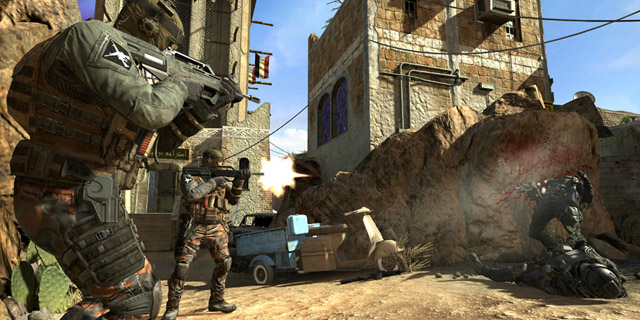
Tactical missteps
Another promising addition to the campaign is an optional set of missions known as Strike Force missions. These put you in control of a squad of troops (and drones) in order to complete a short set of objectives in a limited amount of time. The core of these missions is enjoyable enough, but the A.I. is awful and tends to never work when you want it to. – Andrew Passafiume
The game’s multiplayer is also largely identical. Here’s where we get cuts, though, even if they’re minor: the live-streaming functionality, as well as the Call of Duty Elite service, is nowhere to be found. If those are big deals to you, that may sway you, but most probably won’t mind. The other issue is with the small online community. You won’t have any trouble getting into a team deathmatch, but if you’re looking for some of the less popular game types, it may be a bit tougher.
Still, besides those limitations, this is exactly the Black Ops II multiplayer you’ll find elsewhere. We didn’t encounter any slowdown in this mode, and the GamePad gets a bit more thought here: you can customize your class without jumping into a menu, and you can also use it as a mini-map. Most importantly, I guess, is the local multiplayer functionality, letting one use the GamePad and another use the TV for two full-screen views.
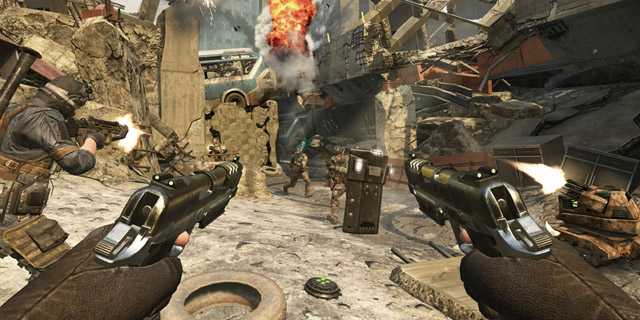
Undead or braindead?
Treyarch’s signature zombie-killing mode, creatively titled Zombies, is back and the same as ever before. This is a mode that I have never been able to have much fun with despite my love of other, similar modes in shooters (Horde mode in Gears of War comes to mind immediately). For those who want it, Zombies is as good as it’s ever been here, and with four maps each with their own particular objectives, there is a decent amount of variety to keep people busy. – Andrew Passafiume
Whether it’s mirroring the main action or splitting it in multiplayer, the GamePad view doesn’t seem to compromise the experience. Turning it on and off yielded no noticeable change in frame rate, and the interface doesn’t hurt from a smaller display. If you’re playing locally with someone who’s not on your team, this could be a big deal, and it could also just be nice for the off-TV play that becomes increasingly important when you’re playing a long-session, never-ending multiplayer experience like this one. One thing that’s becoming more obvious with time is the jarring nature of the GamePad rumble. If you’re playing on that screen and relying on its speakers, the already-loud rumble actually makes it less immersive, taking you out of the action with that droning buzz. It’s not a game-breaker, but it’s a reason to bust out some headphones. (Or, hey, a headset, for voice chat.)
An interesting option to note, though, is the inclusion of Wii Remote and Nunchuk controls. These have never been in the flagship games, even if they were the focus of the Wii titles, and they manage to work well after years of quiet iteration. You can still use the GamePad functions in multiplayer when you’re using motion controls, making it one of the first real uses of the system’s GamePad stand. You can also use the Classic Controller Pro or Pro Controller, if you’d like.
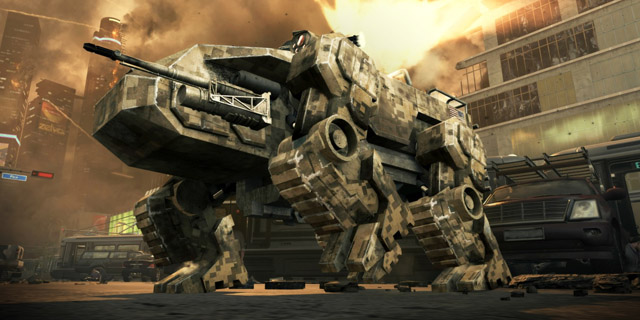
These changes are generally negligible. Black Ops II is just as solid, and flawed, a game as it is on other systems, and for many Nintendo die-hards, that’s a refreshing change. Certainly don’t get this if you own other versions, but if you’re not bothered by a smaller online community (or just want something else for your Wii U), you’re not really going wrong by picking up this edition.
Pros: Same great game, interesting GamePad implementation in multiplayer
Cons: Occasional campaign slowdown issues, smaller online community



















